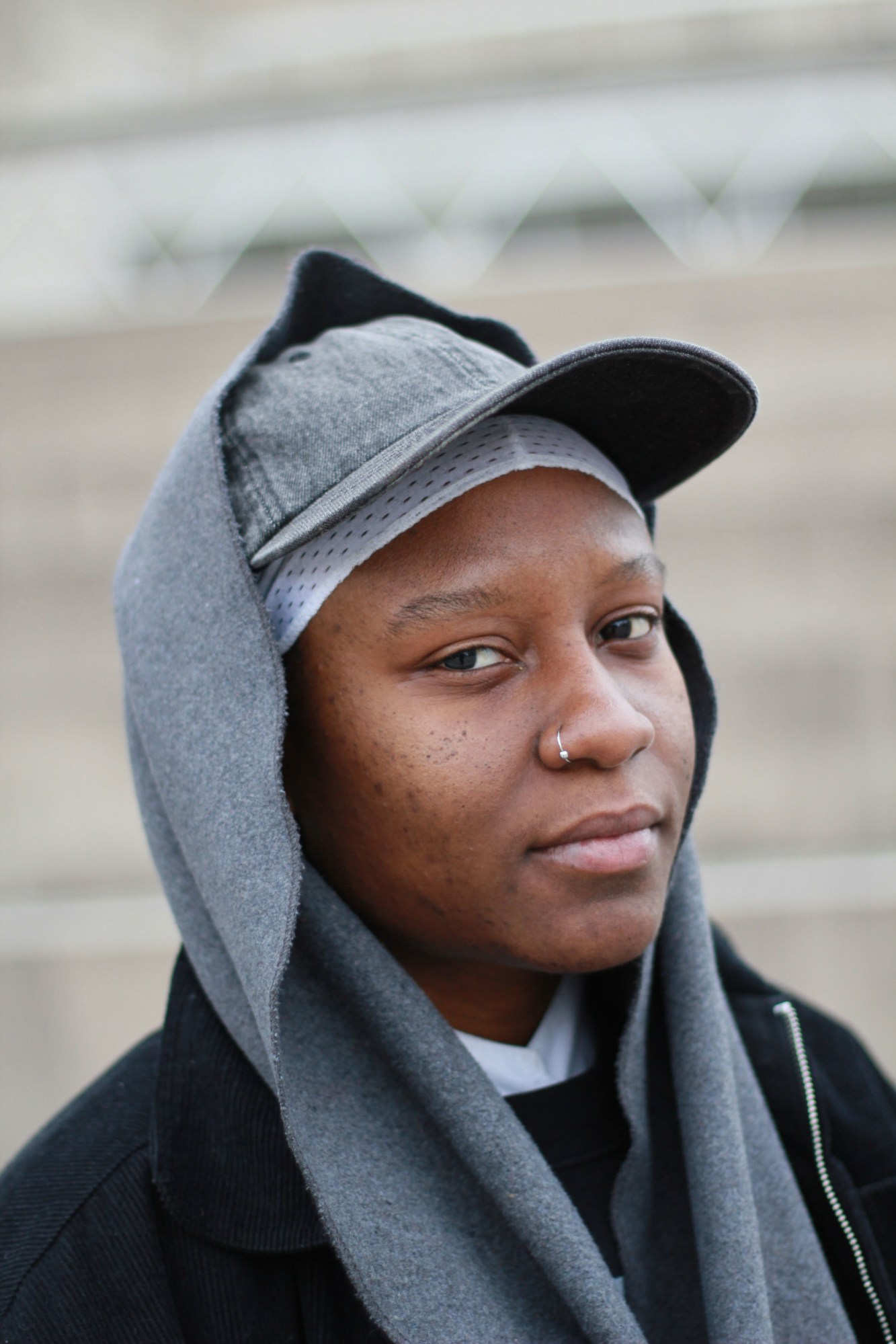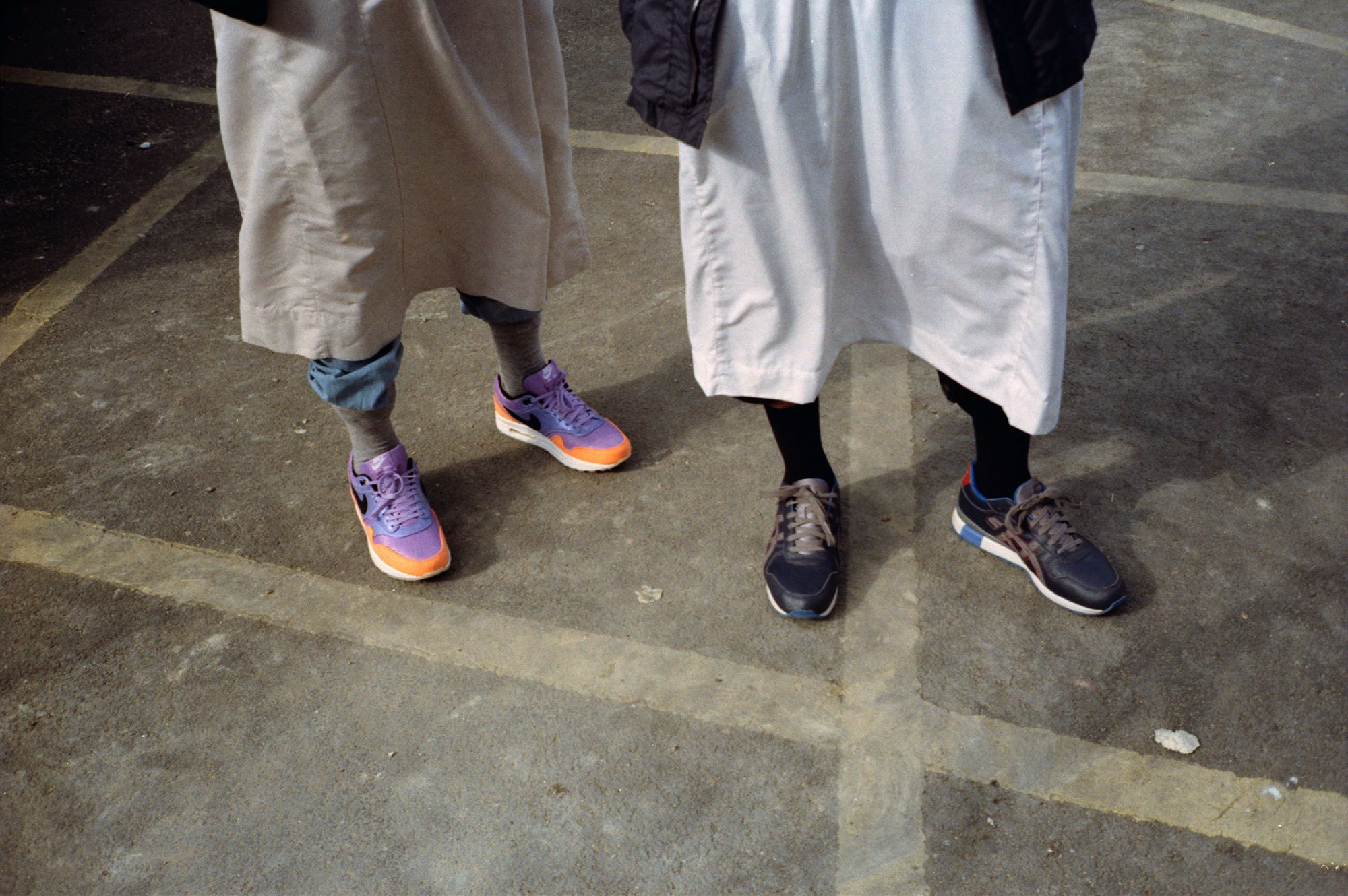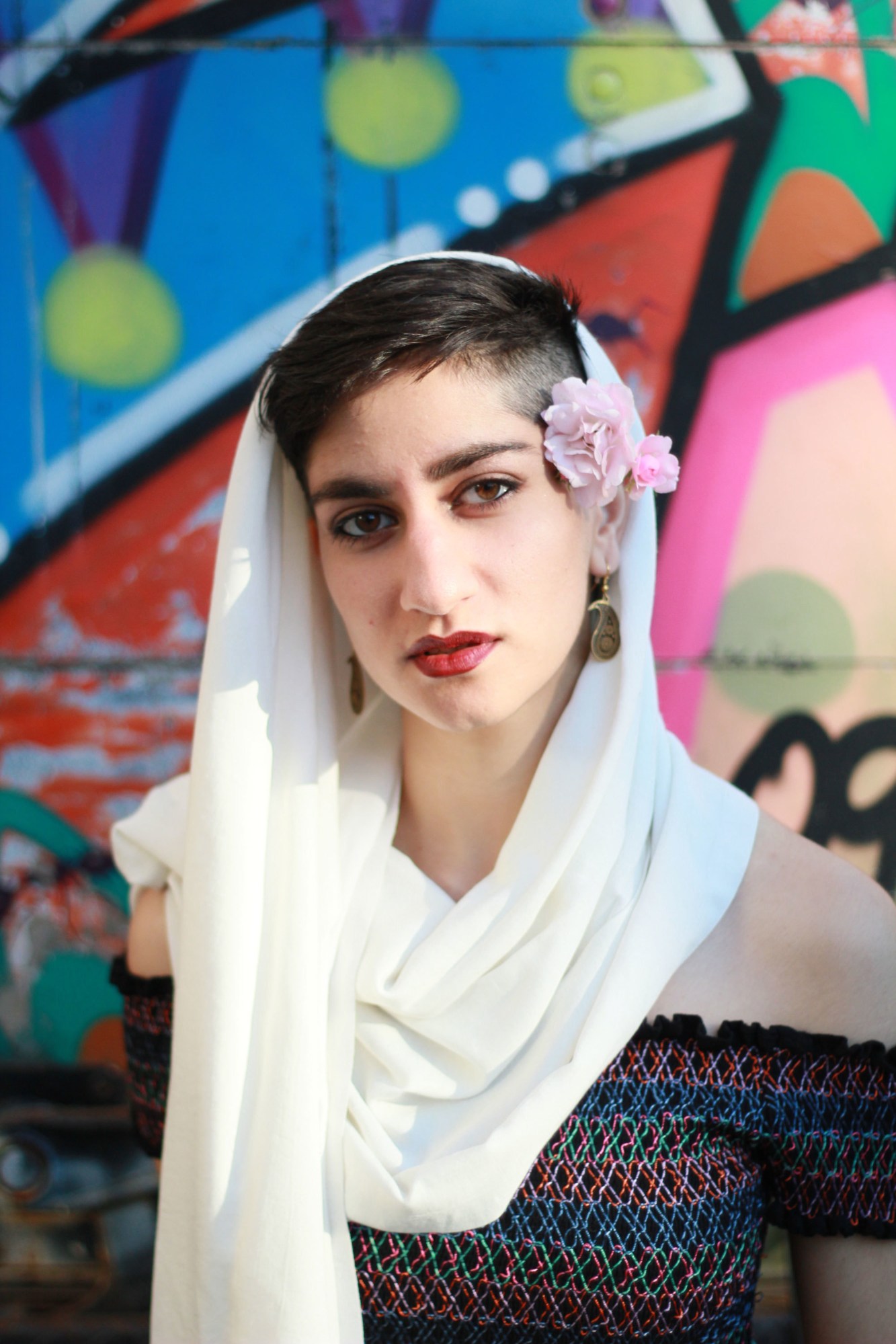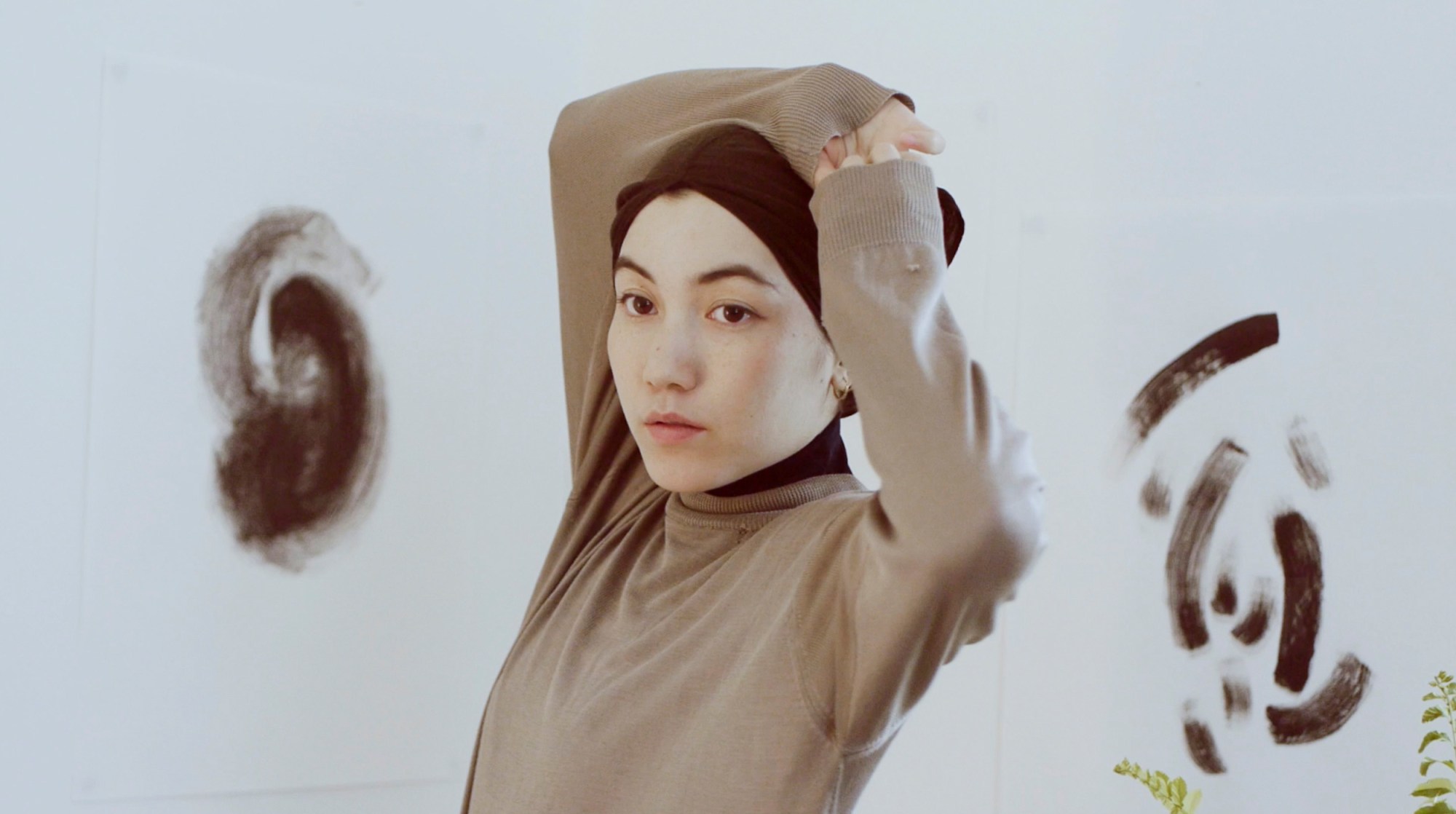According to the Global Islamic Economy report, the worldwide market for Muslim clothing is forecast to be worth £281bn by 2020. And, Islamic branding consultancy Ogilvy Noor estimates 43% of that 1.8 billion sized population are under 25.
Chanel may have included sharia-friendly layers in its 2015 resort collection, and Dolce and Gabbana did launch a collection with embellished hijabs and abayas this January, but there is still plenty of space for experimentation and innovation.
In Birmingham young Muslim men arriving from Pakistan are experimenting with drag thanks to figures like Asifa Lahore. Meanwhile the Skateistan project in Afghanistan is showing the world girls can wear a headscarf, pull off a kickflip and still look badass. The demographic is one that huge and diverse, but one that’s largely been ignored and misunderstood.
Muslim youth have their own diverse style tribes. Futurist Muslims are experimenting with high performance sportswear, like the laser-cut, water-repellent and cooling hijabs designed by startup Veil. Meanwhile, your typical Mipsterz have more in common with the fixie riding, beard-donning brotherhood in Brooklyn.
Change is coming from the ground up. After all, it was Muslim medical student Haneefah Adam who created the first Hijarbie, not Barbie; Olympic weightlifter Amna Al Haddad who showed brands Muslim women can just as easily compete in a ‘bro’ sport, and hyper-influential Instagram stars who are the go to fashion experts.
“The biggest misconception is that there is such a thing as Muslim fashion,” says British-Japanese designer and visual artist Hana Tajima, who has over 30k followers on Instagram. ‘It’s all just clothing.’

What’s far more important to Tajima is people’s attitude. “People choose to interpret ‘codes’,” Tajima tells i-D. “I prefer neutral and mid tones, with more of a focus on texture and longer length sleeves and hems. I cover my hair. For me, I choose to dress in a way that doesn’t feel extravagant, but I think that’s partly my own preference.”
Despite this reserve Tajima clearly has her finger on the pulse of many young Muslims. Recently she launched a collaboration with Uniqlo featuring lightweight breathable fabrics with loose silhouettes that originally just launched in Southeast Asia, but was soon on sale in the US thanks to popular demand.
Mariah Idrissi, the first Muslim woman to wear a hijab for a H&M campaign, subscribes to a similar philosophy; “Modesty is religion-less, and any woman regardless of faith can choose to be modest.”
The 23-year-old model is the first to admit she can go from super glam to tomboy, mixing colourful Puma trainers with aztec prints, to colour-blocking Celine with a simple pair of black heels. “I would simply love to see more modest options within the bigger brands,” says Idrissi. “Anyone can chose to dress modest – for me it’s not just what I wear but a lifestyle.”
Tajima and Idrissi, who also has over 30k followers, both represent the rise of hijabi fashionistas – a new experimental and expressive tribe who are empowered by online networks, and far more confident with their identity than previous generation.
“Young, hijab-wearing women found it challenging to find outfits that combined modesty with style,” says journalist and commentator Remona Aly. “They looked for their own solutions of putting outfits together, and used social media platform to share their creativity with others.”

Its these fashion influencers the mainstream fashion industry is really beginning to take notice of. “Dina Torkia has over 1.4 million followers across social media platforms, and has collaborated with Liberty of London with their scarf collection,” points out Aly. “This kind of thing was unheard of, unthought of even, 10 years ago.”
The modestwear trend most hijabi fashionistas represent doesn’t appeal to everyone in Generation M though. At the age of 19 photographer Samra Habib chopped off all her hair as an act of rebellion, taking her cues from 90s R&B girl band TLC and Comme des Garçons, mixing baggy pants and jackets with a grungy aesthetic.
Now she’s begun to wear a hijab again, but thinks of it as far more of a statement piece to be proud of, like a motorcycle jacket or tattoo. “There are countless ways to be if you decide to incorporate different aesthetic elements that are inspired by Islam,” says Habib.
In her celebrated series Just Me and Allah: A Queer Muslim Photo Project she showcases countless examples of people who don’t subscribe to what a traditional version of a ‘good’ Muslim should look like. One portrait shows a tattoo covered girl who has completely restyled her hijab, while another mixes gothic references and Islamic jewellery. “The common theme is that they are all creating their own paths and visual identities.”
London College of Fashion graduate Nazifa Begum similarly pushed mainstream Islamic dress codes with a debut collection that explored cultural identity and gender norms, with a collection that references to both British and Bangladeshi aesthetics.
Traditional Bengali poetic script and images of the ancient Black Stone of Mecca are woven into garments, such as baggy t-shirts and trousers that reference UK rave and club culture, while male models wear bras and bear gold laced grills. “There’s quite a lot guidelines towards gendered dressing in Islam and I wanted toy with that,” says Begum.

Fashion designer Nicomede Talavera was similarly inspired by Muslim youth around East London mixing traditional cultural dress with streetwear for his MA collection. But his was first and foremost to challenge traditional Western notions around menswear. His use of extended lengths of fabric, layering and loose silhouettes – questioned the staple sharp silhouette.
Some designers are less subtle. Khalid bin Sultan Al Qasimi of Qasimi showed a spring/summer 16 collection, titled False Flags, was intended as a direct attack on mainstream media perceptions of Arabs. Translucent Middle Eastern-inspired shirting to point to ideas clouded truth.
These might seem like cult examples. But the debate around gender, dress and politics isn’t limited to London’s fashion scene. Men across Iran recently donned headscarves and started posting selfies with the hashtag #MenInHijab showing solidarity with women forced to wear the dress code, against their will.
“This is a quote from the Quran that actually states that both sexes need to be modestly dressed – not just the women,” says photographer Toufic Beyhum, who is known for his brilliant photographs of Muslim sneakerheads around Brixton mosque and candid, and forbidden street style shots within Mecca. “I also know lots of Muslim women who practice Islam, meaning they pray 5 times a day, fast during Ramadan but do not wear a headscarf. So I don’t think you have to wear a headscarf to be ‘real’.”
Muslim youth are far more liberal and open to experimentation. An overwhelming majority of young Arabs aged 18-24 reject the extreme beliefs held by the so called Islamic State IS, according to the latest Arab Youth survey.
Habib sums it up best; “It’s just mainstream audiences are not used to seeing young Muslims doing what other young people do: be free, skateboard and be themselves. Muslims: they are just like us!'”
Credits
Text Maks Fus-Mickiewicz
